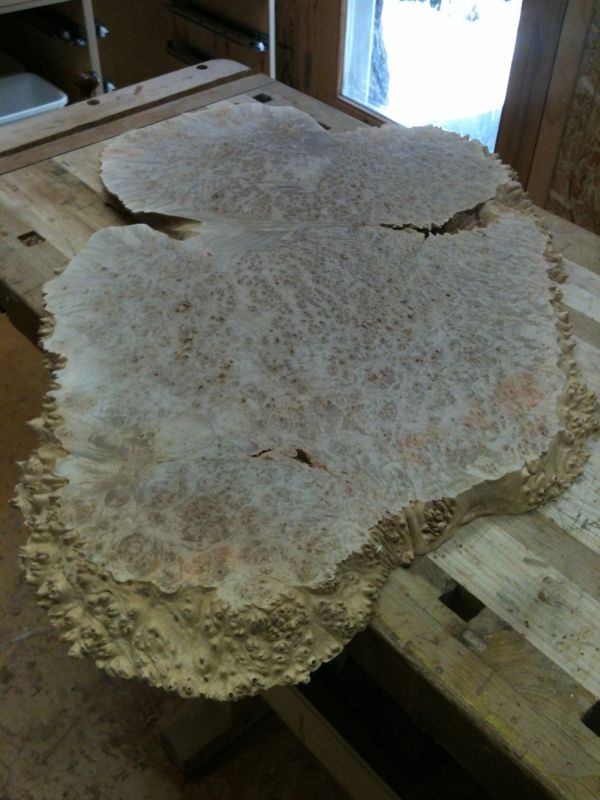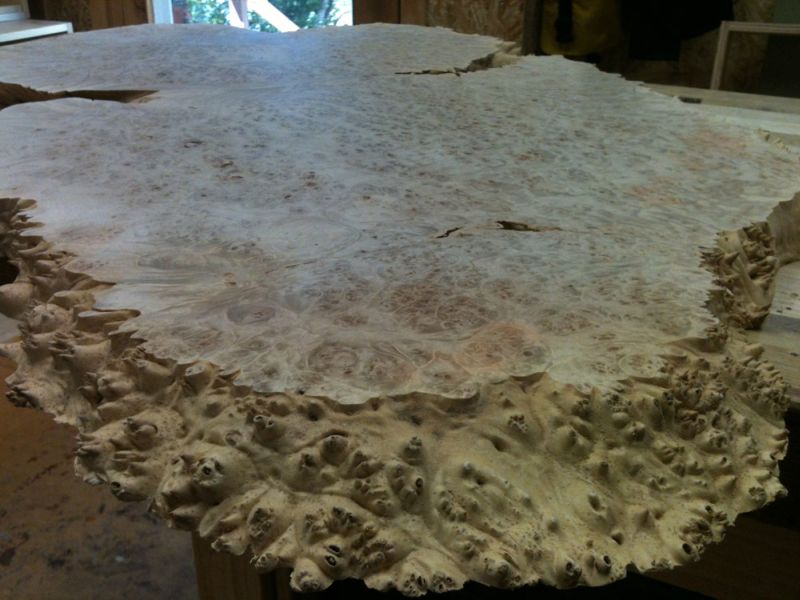Identifying a Burl
Several votes for Bigleaf Maple, and one for Buckeye, in this show-and-tell of an interesting burl destined to become a tabletop. October 19, 2013
Question
Iím looking for some help identifying the burl below. I am guessing it is an exotic. A friend bought it and gave it to me to make a table. It would be nice to know what it is. The edge is super spiky and in some places itís as sharp as rose thorns.

Click here for higher quality, full size image

Click here for higher quality, full size image
Forum Responses
(Sawing and Drying Forum)
From contributor G:
It looks very much like the big leaf maple burl I buy from the West Coast.
From contributor B:
Itís definitely big leaf maple. Itís kind of soft but itís beautiful wood.
From the original questioner:
Big leaf maple has a thorny edge?
From contributor H:
Those are not thorns. It is not unusual for burl to have spiked wood under the bark.
From Contributor S:
That looks like California buckeye. It is old wood that the stump has been dug up and cut. I have used a lot of it and still have some. Itís nice wood.
From contributor B:
The standard big leaf maple tree has a smooth surface, but the burls get spikey. Sometimes small, sometimes very pointed, just depends on the tree. It's what makes the wood look like it does. I've cut up many burled trees with wood like that. Itís fun to see what's behind the next slice. A nice piece of wood - must be a good friend.
From contributor M:
I will throw my hat into the ring and call this an Oregon big leaf maple burl probably from here in Western Oregon or up the road in coastal Washington or B. C. Big leaf maple grows rapidly out here with a 4' dbh tree being maybe 60 years old. The trees grow in canyons along waterways and low wet areas of the Coast range. The burls can get quite large either as basal solitary burls or as clusters throughout the trunk. The worldís largest big leaf was lost to decay and a storm last year. It was in the coast range of Oregon west of Portland. The tree was estimated to be 200 years old, was 103 feet tall, had a canopy spread of 112 feet, and its trunk was nearly 12 feet in diameter.

